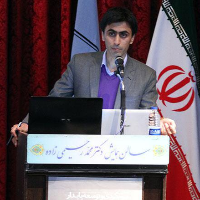Assessing the Hierarchical System of the City of Southeast Iran and its Impact on the Future of Regional Development Indicators
Analysis of the urban system of the south-east of the country is necessary because of the strategic importance of this region and with the aim of recognizing and providing a platform for balanced development, appropriate distribution of population and utilization of environmental capabilities. Therefore, recognizing the environmental, social and economical potentialities and capabilities of the cities of over 10,000 people in three provinces in southeastern Iran (Kerman, Sistan and Baluchestan and Hormozgan) with a regional development approach, is in line with the development of a balanced development of the reasons for writing this research. In fact, the purpose of the present research is to initially investigate the urban system of the southeastern parts of the country, and then, according to assessments of the current status of the urban hierarchy system, its impact on the future of regional development indicators. The results showed that urban hierarchy imbalance is one of the main characteristics of the urban system in the southeastern region, which has resulted in the lack of necessary small infrastructures and small towns. Also, the results of the futuristic model showed. Considering the importance of demographic indicators and their impact on the future of regional development indicators and the involvement of multiple elements, it is clear that the variables of urban management practices (36) and development status Human Indicators (35) have the highest calculated column value, respectively. In other words, the most important feature of these variables is low impact and high impact, and they are referred to as strategic factors, whose reinforcement boosts development in this region and has a positive impact on the economic, social and environmental dimensions.
-
Explaining the effectiveness of memorable experiences from rural tourism destinations on the future behavioral intentions of tourists (case study: rural destinations of Mashhad, Neyshabur and Torghabe Shandiz counties)
Zahra Soleymani, *, Hamid Shayan, Siamak Seyfi
Journal of tourism and development, -
Taxonomy and Prioritization of Conflicts in Tourism Development for Destinations Using a Combined Meta-Synthesis and Fuzzy Delphi Approach
Mitra Yarahmadi, Hamdollah Sojasi Qedari *, Hamid Shayan, Siamak Seyfi
Journal of Tourism Management Studies, -
Identifying the Challenges Facing the Development of Rural Tourism Entrepreneurial Business Ecosystem (Case Study: Sarduiyeh District in Jiroft County)
Seyed Reza Hosseini Kahnooj, *, Aliakbar Anabestani, Ali Shahdadi
Journal of Rural Research, -
Identify challenges affecting the development of tourism business ecosystem using a phenomenological approach
Seyed Reza Hosseini Kahnooj, *, AliAkbar Anabestani, Ali Shahdadi
Journal of Spatial Planning,



